How To Teach Multiplication
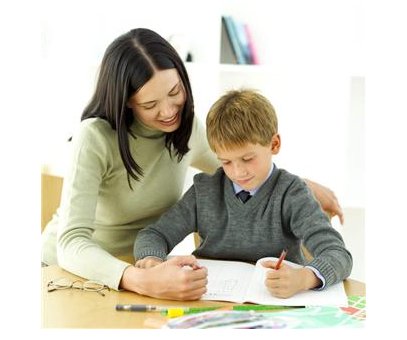
Learning how to teach multiplication means you must be determined to be patient and keep the lessons simple.
If you've followed the previous lessons, your child has been learning how to add and skip count, but combining the two together in multiplication can be confusing.
If your child hasn't done so yet, review the lesson on Skip Counting and go over the various Multiplication Table sets. Forcing the student to learn another table before he has mastered the previous one just fosters confusion.
When
beginning multiplication lessons, it's easiest to start with the tens,
fives, and twos. Ones and zeroes are good places to begin too. They can help give a basic understanding of what multiplying is using numbers that are smaller and easier to grasp.
How To Teach Multiplication (Object Lessons)
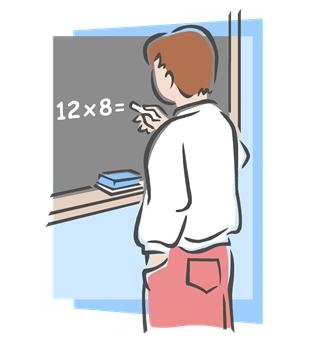
I'll use ten as an example to show you one easy method of introducing multiplication to your child.
Group common objects (think jellybeans or M&M's!) into groups of ten (or whatever number you choose) to help your child visualize the concept. Common objects to use could be buttons, candy, crayons, or small (but similar) toys.
Tell her that she must figure out how many of the objects are on the table. Separate the items into piles of ten.
Have the child count aloud how many of each item are in one pile. Continue the same with the second, third, fourth and fifth pile to impress upon her that there are 10 items in each pile.
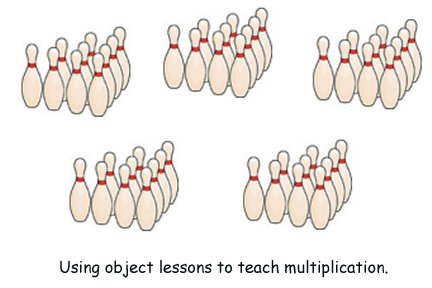
With a pen and paper, point out that if you did repeat addition, finding the total number of objects combined would be written like this:
10 + 10 + 10 + 10 + 10 = 50
So! Five groups of ten equals fifty. Ask her to write the same equation as a multiplication problem. She should write this:
10 X 5 = 50
Now place a bowl over one group of the candies. Ask the student how many candies are not hidden. Count aloud with the child:
10 . . . 20 . . . 30 . . . 40!
Again, show her how your addition is in fact a multiplication problem:
10 X 4 = 40
Continue with the lesson, covering and uncovering the groups of 10. Cover a different amount of groups each time, count, and then write it as a multiplication problem.
Encourage her each time she counts the remaining piles of objects to do it by counting in increments of 10.
Once your child has mastered a unit (ten in this example), move on to other factors. Use this method for the numbers 2 through 12 (laying out groups of twos, threes, and so on) as a visual aide for your child or students.
For more lessons on how to teach multiplication, see the links below.
Related Multiplication Lessons:
Worksheets › Multiplication › Teaching Multiplying
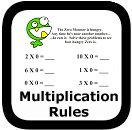
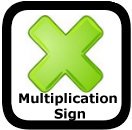
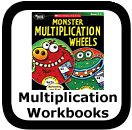
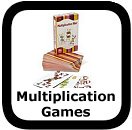
New! Comments
Have suggestions or requests for a worksheet? Let's Talk!